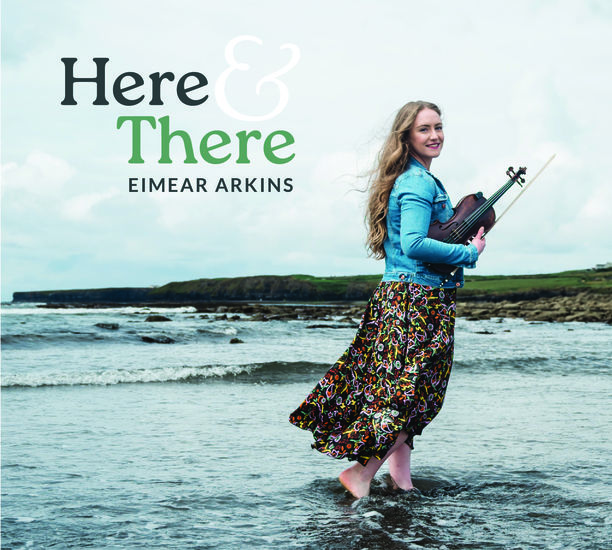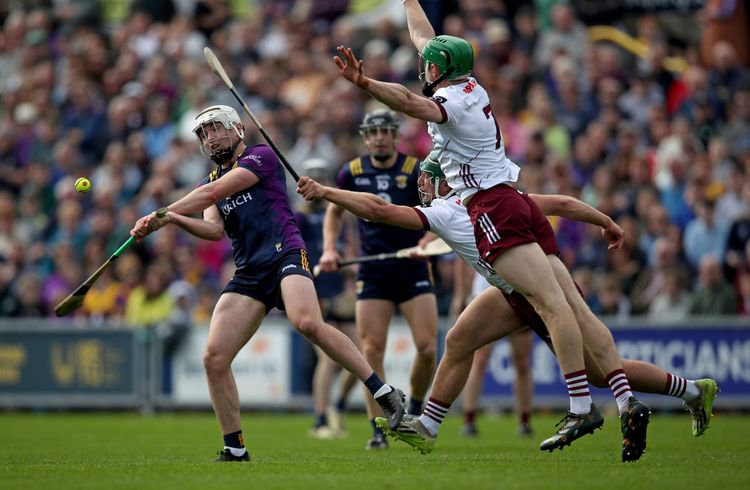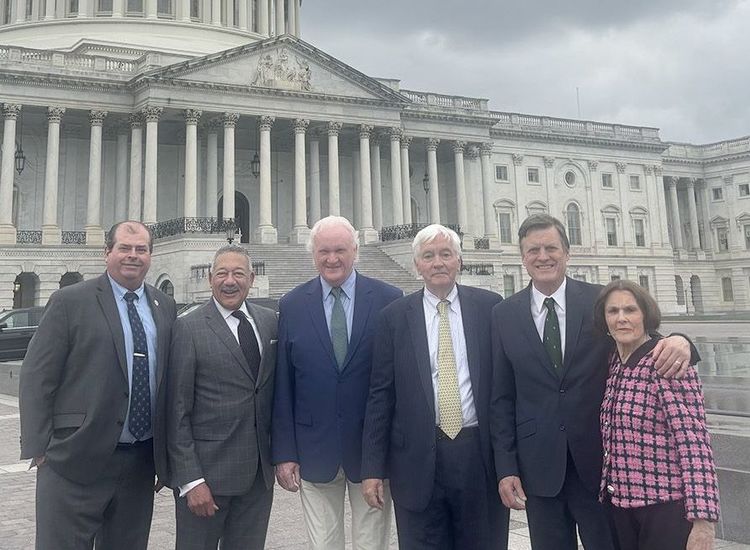Cherish the Ladies’ “All the Valley Down” is one of the most beautiful ballads you can hear this Christmas.
By Colleen Taylor
It’s that time of year when you hear “Last Christmas” or “All I Want for Christmas is You” at least once a day. Christmas music can be a divisive issue—people either love it or hate it—and while I proudly admit I fall into the former category, I also appreciate Christmas music for a more critical reason. This festive time of year, which brings back old hits and introduces new ones, offers an opportunity for reflecting on the cultural impact of Irish musicians. Across a wide, varied range of Christmas jingles, Irish musicians cover the board, from the classics (Bing Crosby) to pop rock Christmas hits (“Fairytale of New York”). But it’s Celtic Christmas music, not always easily accessible on mainstream radio, which offers some of the most creative and historically insightful music you’ll hear year-round. The musicians listed here are interpreters and innovators—they do more than cover the traditional Christmas songs we all know, they re-create them.
Perhaps it’s best to start at the beginning, with two contemporaneous artists: Crosby and Clancy, who—sadly for us—never became a duo act. We might see in these two festive musical acts the establishment of a popular music tradition in Irish Christmas songs. “Christmas in Killarney,” made famous by Bing Crosby in 1951 (and never bettered since), was the product of three Irish-American songwriters: John Redmond, James Cavanaugh, and Frank Weldon. The song is a cultural artifact as well as a jolly Christmas croon. Written in 1950, the song documents that decade’s spike in Irish immigration to the U.S., generating American nostalgia for Ireland through jaunty melody and a bucolic picture of the Irish hearth. We might find the song kitsch or cliché now, but “Christmas in Killarney” nevertheless attempted to emulate the Irish accent with its lyrics, phrases like “Ya know of course” and “one of the boys from home,” literally incorporating the voices of the Irish émigré into the popular American mindset. Later, the song experienced its own reverse diaspora when recorded by the Irish Rovers in 1999.
In the 1960s, the Clancy Brothers became a fixture on the New York stage, and then the national stage with their appearance on “The Ed Sullivan Show” in 1961. Eight years later they released their now classic album, “Clancy Brothers Christmas.” This brought the Irish language into the American vernacular with “Buala Bas” or “Jingle Bells.” More significantly, the album creates a historical experience—evoking the folk tradition of midnight Mass in the fields in the 19th century, singing religious songs in the Irish folk mode. The final two songs on this album, “Curoo, Curoo” and “The Wren Song” encapsulate the scope of a burgeoning Celtic Christmas tradition, from the lilting Christmas lullaby to the lively, humorous tune about St. Stephen’s Day. This album marks the origin of an Irish-American Christmas music tradition we can trace in the artists to follow.

Eileen Ivers’s “An Nollaig” is a serious contender for the best Irish Christmas album ever made. PHOTO: MEL DIGIACOMO
The most direct line in this tradition moves from Clancy to Cherish the Ladies, who regenerate—and regender—the folk Christmas sound of the Clancy Brothers. Cherish the Ladies have released three Christmas albums since their formation in the late eighties: “On Christmas Night” (2004), “A Star in the East” (2009), and “Christmas in Ireland” (2015). “A Star in the East” remains my personal favorite, particularly for Joanie Madden’s work with “Rise Up Shepherd and Follow,” a rare 19th-century American hymn reinvented into a Celtic folk song. It’s categorically impossible to be a Grinch after hearing that song, particularly when Madden hollers in her Bronx accent at the song’s decrescendo: “Come on Shepherds, we’re heading for Ireland!” The instrumentals on the band’s third Christmas album, “Christmas in Ireland,” are truly superb, turning traditional songs like “We Wish You a Merry Christmas” and “Good King Wencesclas” into lively traditional sets. There is also an original tune called “The Hot Water Bottle”—enough said. Cherish’s “All the Valley Down” is one of the most beautiful ballads you can hear this Christmas: it effects that Irish nostalgia I first mentioned in relation to “Christmas in Killarney” with even greater emotional profundity. The same can be found in the exquisite and moving “Christmas Letter,” a song about a sick woman in Ireland wanting to hear her family’s letter from America read aloud (you’ll need tissues). The Christmas music of Cherish the Ladies is undoubtedly some of their best, and given the band’s longstanding international success, that is saying something. Their music perfects the binaristic emotional experience of the expat’s Christmas: from joy in present company to missing lost loved ones, from excitement to nostalgia.
People tend to call Boston the 33rd county, but this list would suggest that diasporic honorary county is better located in the Bronx. Just down the road from where Madden was perfecting her flute, Eileen Ivers was experimenting on her fiddle. If Cherish the Ladies are the keepers of an Irish Christmas tradition first established by the Clancys, then Ivers is the rock star there to mix it up. Ivers’s “An Nollaig” is undoubtedly one of—if not the—best Irish Christmas albums ever made. It’s an Irish-American cultural fusion of traditional Irish, blues, even gospel and soul styles mixed together to electrify the Christmas cultural spirit of America. A bluesy, Irish “Hark the Herald Angels Sing” is the album’s keynote piece, showcasing Ivers’s prowess as a musician and innovator. But her original tunes are my favorite, from “Christmas Eve,” which melds rapid-fire fiddle work with Christmas flutes and bells, to a jig set, “Apples in Winter,” which builds to a feel good tune that will have you imaginatively walking down Grafton Street on Christmas Day. Ivers’s album not only emphasizes Irish music’s influence on a Christmas tradition in America, but it also celebrates America’s gift of the musical melting pot. This is not an Irish Christmas tradition, but something that can only be defined as Irish-American or American-Irish jubilation.
There are plenty of other artists producing Celtic Christmas music that deserve mention: Ashley Davis’s “Songs of the Celtic Winter” and “The Christmas Sessions,” Cara Dillon, whose recent “Upon a Winter’s Night” returns to an early Christian, quasi-mystical vision of the Winter season, and Kate Rusby who, although hailing from Yorkshire, breathes new life into a Celtic folk Christmas sound. Lastly, the “Wexford Carols,” and album of eighteenth and nineteenth century carols assembled by Catríona O’Leary and released in 2016, combines and culminates the trends of cultural recovery and reinvention we have been tracing here. The album blends O’Leary’s historicizing impulse with her band’s modernizing one. The album features super-force American folk singer Rhiannon Giddens, traditional music legend Dónal Lunny, Rosanne Cash (Johnny’s daughter) and English folk singer Tom Jones, who fittingly gathered in a barn in the Irish countryside to record these centuries’ old Irish Christmas tunes. If this isn’t the spirit of Irish diaspora and Celtic Christmas, I don’t know what is.
Perhaps the historical nature of the Christmas season, its rootedness in tradition—both family and human—is what makes it a buoyant imaginative springboard for the best Irish artists. The genre of Celtic Christmas makes historians of all of us—you cannot listen without engaging in centuries of tradition. Thus, if this column can be considered historical observation, I might also argue it chronicles a pattern in which a festive Irish music tradition that was once almost exclusively male in the early twentieth century, is increasingly heralded by female artists. Among these women, from Cherish to Ivers, Dillon and Giddens, the traditions of the Clancys and the like are forwarded, kept alive, kept lively.
Nollaig shona daoibh, and thanks—as always—for reading.










